
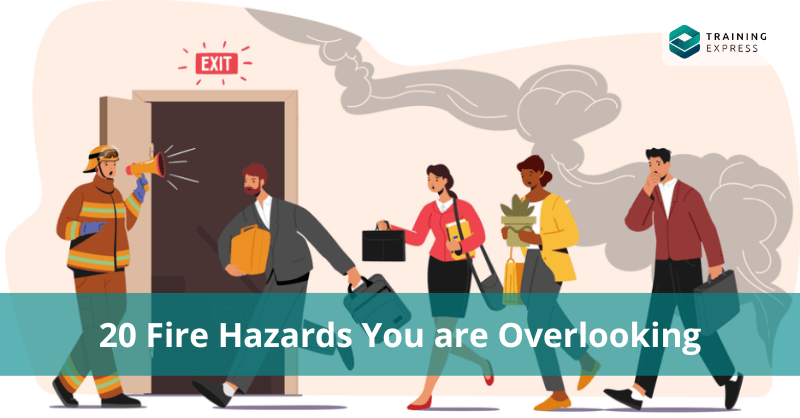
Fire safety is not something we often think about until it’s too late. As a result, fire hazards are often unseen and overlooked in our daily lives, but they pose a significant threat to our safety and well-being. With a spark, a small fire can quickly escalate and cause devastating damage to homes and businesses.
From overloaded electrical outlets to improperly stored flammable materials, there are many dangers that we may overlook. In this blog, we’ll highlight 20 common fire hazards that you may be overlooking and provide practical steps you can take to reduce your risk.
Let’s see what you are going to learn from this blog:
Table of Contents
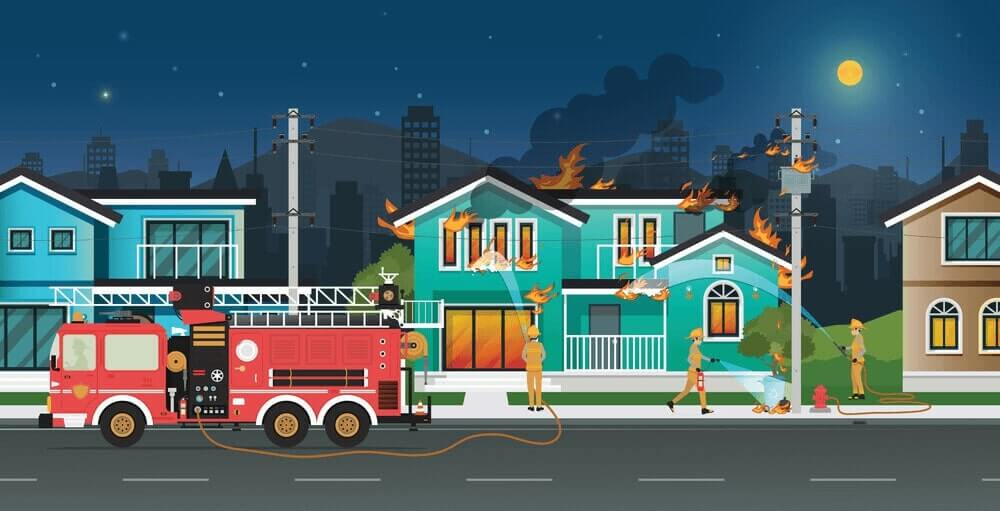
What is a Fire Hazard?
Fire hazard means any condition, process, or material which may cause an explosion or flame or provide a ready fuel supply to increase the spread of the fire and which possess a threat to life or property.
In other words, a fire hazard is any substance, material, or action that increases the chance of an accidental fire occurring. Notably, fire hazards and fire types will vary from worksite to worksite, depending on the kind of work and the types of material in the location. Let’s go over the fire hazard signs.
Fire Safety Signs
Fire safety signs are part of fire safety signage to indicate various health and safety information. Signs may act as safety information, hazard warnings or guidance. Besides, fire safety signs can involve images and text and come in multiple colors depending on their meaning.
According to The Health and Safety (Safety Signs and Signals) Regulations 1996, all fire safety signs should be clear and precise, with a picture and text positioned at a proper height where everybody can read them easily.
You should note that three categories of fire prevention symbols include warning signs, prohibition signs, and signs that must be obeyed. All of these offer suggestions for how to avoid starting a fire and a few of them are also legally required.
First: Warning signs show that a hazard is there, and attention should be given to avoid damage or an accident.
Second: Standard fire safety prohibition signs are ‘No Smoking’ and ‘No open fire’ signs.
Third: Mandatory signs are immediately recognised by their bright blue color and are frequently round. If a sign contains the mandatory fire safety sign, specific action must be taken to put out a fire. For example: ‘Use the fire extinguisher”.

20 Things That Become Fire Hazards Without Proper Maintenance
Unfortunately, we live in a corporate world where we must deal with fire, from cooking to producing goods. Besides, numerous components can cause an outbreak of a fire within the workplace. Moreover, fire hazards can quickly damage property, injure us or even worse.
In addition, electrical appliances, smoking, trash, storage, and heating are common reasons for fire hazards. So, you can take action to avoid fire hazards at home and ensure your family’s safety.
Below, I am showing you some of the 20 most common things that can become fire hazards without proper maintenance. For example:
- Toasters, Toaster Ovens;
- Pests, Heaters;
- Bathroom Exhaust Fans;
- Air Conditioners;
- Rangehoods, Outdoor Grills;
- Landscaping, Dryer Vents;
- Unwashed Rags, Chimneys;
- Hairdryers, Lawnmowers;
- Flammable liquids, gas cylinders;
- Dust or debris, Chemicals;
- Candles, smoking;
- etc.
Moreover, always be careful before and after using these things. However, fire hazards are common in almost any work environment and can occur without prior warning. Therefore, you must ensure proper protection at home or office to prevent such fire hazards.
8 Most Overlooked Fire Hazards in Your Home
We often overlook some fire hazards which might cause a fatal disaster anytime. Some hazards in the home are more noticeable than others, and some are easier to spot than others. Here is a list of commonly overlooked fire hazards in the house:
- One: Candles and flames;
- Two: Burning cigarettes unattended;
- Three: Electrical equipment;
- Four: Rodent nests near electrical wires;
- Five: Cooking equipment;
- Six: Electric scooter charging;
- Seven: Faulty decoration;
- Eight: Pets and children.
Notably, be ready for a house fire by confirming your home is equipped with fire extinguishers and working smoke detectors.

7 Most Overlooked Fire Hazards in Your Office
Office fires can be equally devastating for both employees and employers. The damages could take the business offline even if no one gets hurt. Moreover, the impacts of a commercial fire can range from business incapacitation to inventory loss.
- One: Clutter around desks and computers;
- Two: Burning cigarettes unattended;
- Three: Electrical equipment;
- Four: Human Error/ Faulty decoration;
- Five: Blocked walkways and fire escapes;
- Six: Office kitchen equipment;
- Seven: Cheap renovation.
With so many people using the workplace daily, human errors are a common cause of fire hazards. In addition, if the workplace is not cleaned and maintained regularly, they might cause a fire risk, primarily if this occurs in poorly circulated areas.
Therefore, all staff should be given basic fire safety training to ensure the appropriate procedures are followed if any hazards are identified. Let’s learn about ignition sources.
What are Ignition Sources?
An ignition source is an action or process which can cause a fire or explosion. In addition, ignition causes a discharge of flammable substances to become a fire or explosion.
Besides, many possible ignition sources will rely on the release scenario. For example, electrical sparks, naked flames, and hot surfaces are all potential ignition sources.
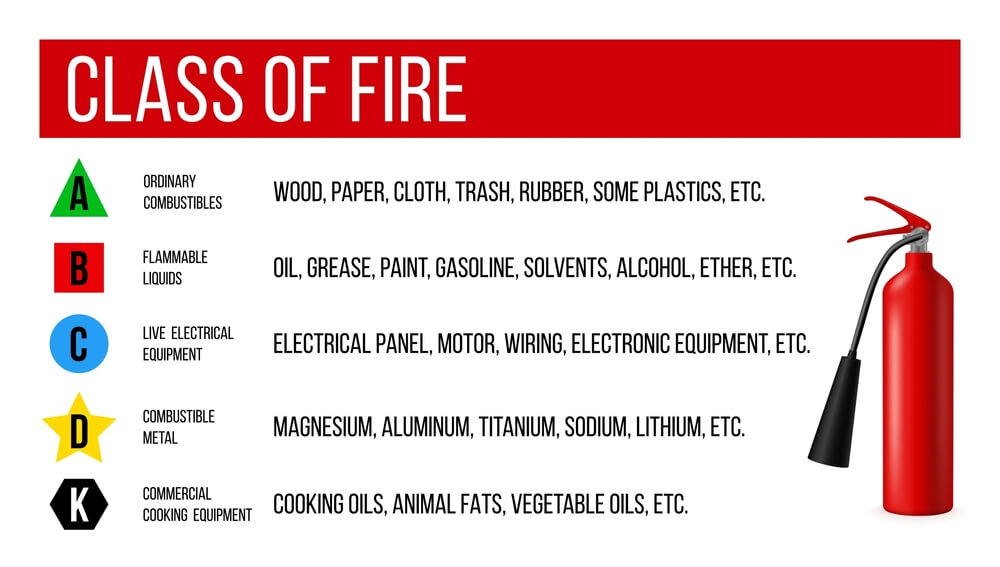
Different Classes of Fire
The five types of fire include: A, B, C, D, and F. Let’s explore the different kinds of fire and their fuel sources.
First: Class A
They are the most common type of fire. They are produced from common flammable materials, including wood, paper, fabric, rubber, and plastic. In addition, you can use water and foam agents when fighting Class A fires.
Second: Class B
Class B fires occur when combustible liquids or gasses such as kerosene, alcohol, paint, petrol, methane, oil-based propane or coolants ignite. Class B fires are most common in commercial or industrial locations but may also occur in residential settings. Notably, using Carbon Dioxide (CO2) or dry chemical agents to fight these fires would be best.
Third: Class C
Class C fires occur from electrical equipment, electrical currents or as a source of fuel. Such fuel sources could include electric appliances, tools, motors, faulty wires and transformers.
Fourth: Class D
Class D fires are those that occur with a combustible metal fuel source. Common combustible metals include aluminum, lithium, magnesium, potassium, titanium, and zirconium. In addition, these combustible metals are primarily used in laboratories and manufacturing industries.
Fifth; Class F
Finally, Class F fires are cooking fires that result from the combustion of a liquid like oil, vegetable fat, or animal fat. In addition, class F fires are most familiar in the restaurant industry and food service but can occur in any kitchen.
Do you know how to report a particular fire hazard?
Report a Fire Hazard
To report a fire hazard,
Firstly: Call 999 to report an emergency or condition that might cause risk to life or personal property.
Secondly: Keep calm and Tell them about every detail of the hazards you notice. Moreover, try to provide them with as much information as possible, including the hazard’s location and type of fire.
In addition, you can contact your local fire safety team or fire station. Otherwise, dial 999 and talk to a control room operator.

Fire Safety Precautions
The more you are conscious, the more risks you can mitigate. It is about the life and death of people. There is no chance of mistakes. So you must take the necessary steps as precautions. For example:
First: Install automatic fire alarms, and fire extinguishers inside bedrooms, on every level of your home.
Second: Test smoke alarms, electrical equipment, and wiring regularly. If they’re not working, replace them as soon as possible.
Third: Talk with all family members, employees and workers about a fire escape or exit plan and practice the technique twice a year.
Fourth: In the case of high-rise buildings, installing automatic sprinkler systems is also essential.
Finally: teach everybody about fire extinguishers and how to use them for different types of fire.
In addition, according to Health and Safety Executive, employers must do and maintain a fire safety risk assessment, as well as building owners or occupants. This can be done separately or as part of a more extensive risk assessment and follows the same process as health and safety risk assessments.
Importantly, we all need to be more careful to reduce fire hazards as much as possible.
Now you have taken all the precautions, but somehow something catches on fire, and you need to put it out. So how do you do that? Let’s learn How to put out a fire.
How to Put Out a Fire
Knowing how to extinguish a fire can come in handy when confronted with a fire hazard. That being said, always use your best move and judgment, because determining the type of fire can be crucial in extinguishing a fire.
In addition, using an extinguisher is the best way to fight a fire hazard. Here’s how to put out the most familiar types of fires and which fire extinguishers you need to use for each.
First: Class A
Class A fires are comparatively easier to put out. The Fire Equipment Manufacturers Association advised using a foam or water fire extinguisher on Class A fires.
Second: Class B
According to The Fire Equipment Manufacturer’s Association, you should extinguish Class B fires using foam, powder, or carbon dioxide extinguishers. By denying a fire’s oxygen supply, these extinguishers put out fires.
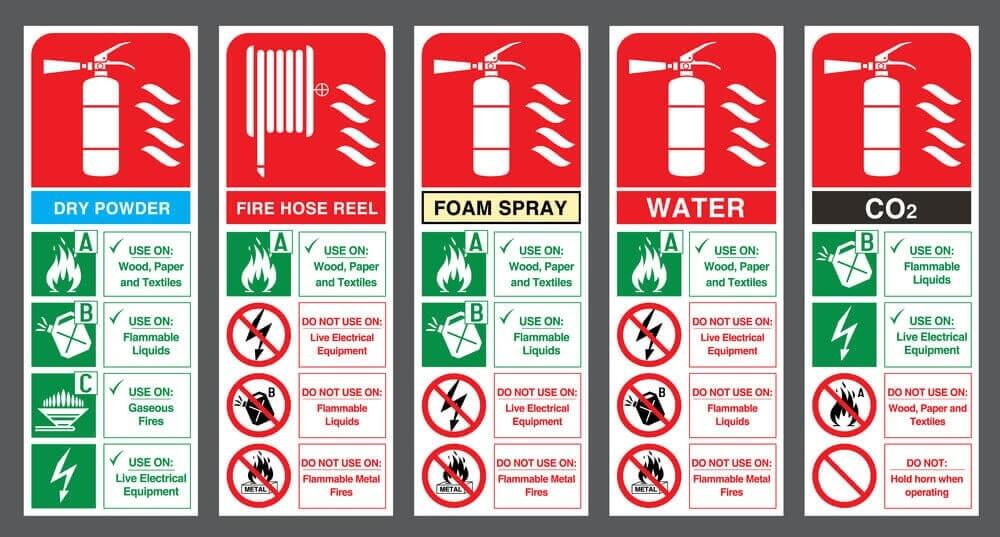
Third: Class C
For class C fire, if you feel safe, disconnect the appliance or equipment from its power source in the possibility of an electrical fire. If possible, use a carbon dioxide or dry powder fire extinguisher to extinguish the flames. However, the fire may change into a different class of fire, usually Class A, when the power supply is cut off.
Fourth: Class D
Although you’re unlikely to encounter a Class D fire in your home, the Fire Equipment Manufacturer’s Association only recommends extinguishing these fires with a dry powder extinguisher.
Dry powder extinguishers put out metal flames by severing the fire’s heating element or separating the fuel from the oxygen. However, Imperial Systems claims that using foam or water extinguishers can worsen the flames by causing explosive fires.
Fifth: Class F
According to Marsden fire safety, you should snuff a Class F fire with a wet chemical extinguisher. These are compulsory in many retail kitchens and are a good investment if you cook at home.
Fire blankets
Fire blankets are usually installed in kitchens and used in residential and educational settings. However, you can use them on someone whose clothing has caught fire. They douse the fire, block the oxygen supply fuelling it, and finally put it out.
If you don’t have any fire extinguishers available, follow the tips listed below.
Other Common Fire Extinguishing Methods You Need to Know:
- Cover the fire with a fire blanket or a large piece of fire-resistant material such as fibreglass.
- Pour a large quantity of baking soda or sand on the fire.
- In case of an electric fire, turn off the electricity on the house’s breaker box.
- For ordinary fire, grab a bucket and fill it with water. Douse the flames.
- For emergencies, call 999, don’t risk your life anyway.
How to Use a Fire Extinguisher a Quick Guide
There are four (4) primary steps for operating fire extinguishers. The acronym PASS is used to explain these four steps.
- First: Pull the pin on the extinguisher’s top. The extinguisher can be discharged after the pin releases a locking mechanism.
- Second: Aim away from the flames and toward the fire’s base. This is crucial: you must extinguish the fuel to put out the fire.
- Third: Squeeze the lever: It will discharge the extinguishing agent in the extinguisher. The discharge will end if you release the handle.
- Fourth: Sweep from side to side: until the fire is extinguished entirely, sweep the fire extinguisher back and forth. Use the extinguisher from a safe distance, at least a few feet away, and walk closer to it when the fire begins to go down.
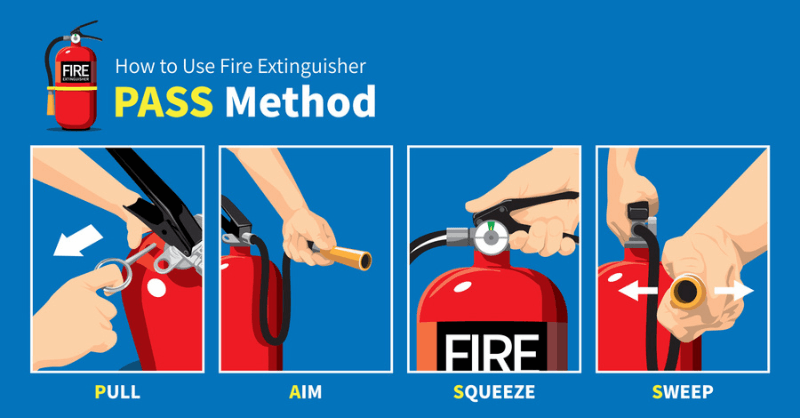
Notably, do not spray at the flames; aim at the fire’s base! In addition, please read the directions on your fire extinguisher carefully because different extinguishers advise using them from various distances.
In addition, enrolling on the Fire Extinguisher Technician course can thoroughly teach you about different fire extinguishers. However, do you know how to avoid fire hazards?
How to Avoid Fire Hazards
A fire hazard can happen anywhere, and always being ready to fight it is vital. Here is a list of suggestions for you:
- Never leave flames unattended;
- Use surge protectors;
- Get the furnace checked;
- Keep the debris down;
- Check the electrical frequently;
- Remove lint and change filters;
- Don’t smoke in the home;
- Keep flammable items away from heat;
- Turn off heated appliances when
- leaving the house;
- Unplug items you’re not using;
- Use flashlights in the dark, not candles.
Therefore, you should follow these as tips to make your home safer and reduce the fire risk so that you don’t have to worry about it as much.
Summary
Shortly, taking steps and following directions given in the blogs can dramatically reduce any hazards, which makes the time and effort required worthwhile because it makes your family safer than ever. Besides, there is always a risk because fires can often break out despite your best efforts, but you also want to be sure you are trying to avoid them. So adhere to these suggestions, and you’ll be good to go.
In addition, check out fire safety training to make sure you and your family are safer than ever.
FAQ
Are Led Strips a Fire Hazard?
The risk of fire with LED strip lights is relatively low. This is because well-manufactured LED lights are long-lasting and can be left 24 hours, seven days a week. In addition, unlike conventional types of light, LEDs produce minimal heat, so they are unlikely to overheat or set on fire.
Are Fairy Lights a Fire Hazard?
Usually, there is no possibility of fire hazards from the fairy lights. However, they can overload a socket and start burning soon. Also, if you place the lights near any combustible objects under an extreme temperature, they may begin to fire. Therefore, I recommend you avoid fire from fairy lights by turning them off if you sleep or leave the house alone.
Why are Fire Safety Education and Training Important?
Fire safety decreases the risk of injury and other damage that fire hazards can cause. Therefore, fire safety education and training are not only required but also vital to everyone in our society.


- Available Courses
- Construction39
- Teaching12
- Teaching & Academics Primary20
- Accounting & Finance Primary15
- Design4
- IT & Software38
- Healthcare77
- Marketing27
- Career Bundles69
- Health and Safety322
- Electronics24
- Hospitality21
- Health and Social Care192
- Child Psychology31
- Management314
- Business Skills236
- First Aid64
- Employability253
- Safeguarding59
- Food Hygiene96
- Personal Development1171
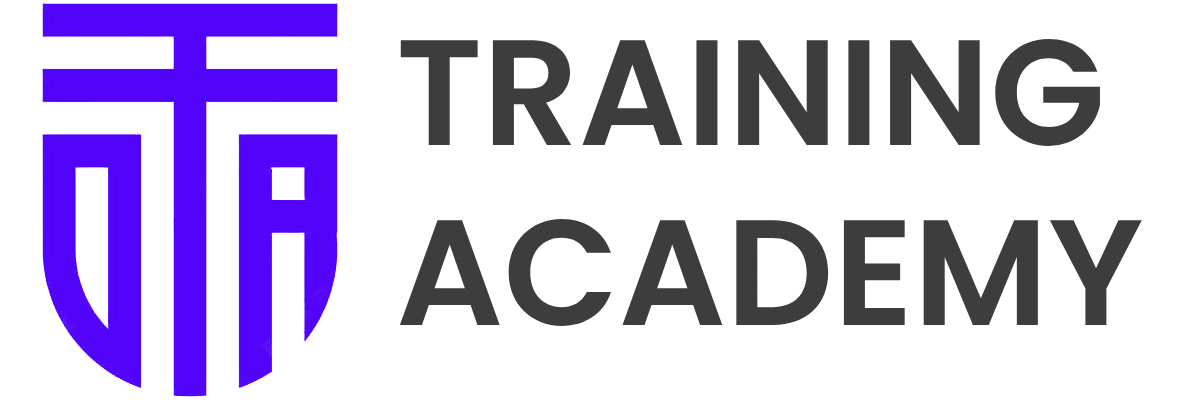
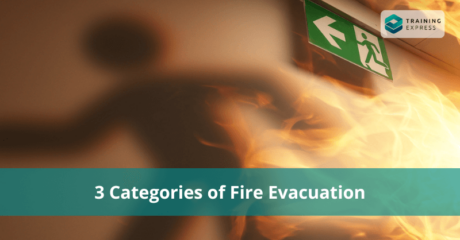




0 responses on "20 Fire Hazards You are Overlooking"